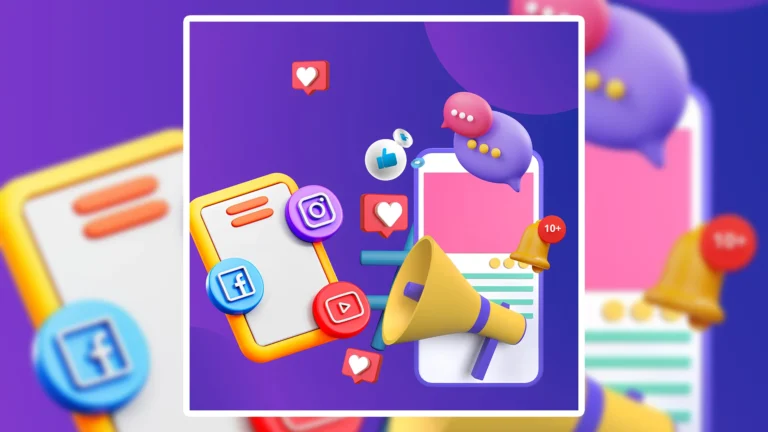Augmented reality is a concept that has bled into our daily lives more than we probably notice. Over the years, AR has slowly become a mainstay in most people’s technological experience.
From social media filters and virtual makeup trials to more practical implementations like real-time navigation and interactive learning, AR has become a technology that is not just a novelty but a practical tool we all use in our daily lives.
But what is augmented reality, really?
An Intro to Augmented Reality
Contents
Augmented reality is a technology that enables users to experience a digitally enhanced perception of the world around them. AR typically requires the combined use of hardware, such as a smartphone’s camera, and software, like Google Maps’ AR features, to achieve the desired effect.
A common misconception is that AR is the same as virtual reality. While the two indeed share many similar characteristics, the key difference is the level of immersion each of them provides.
Where virtual reality fully immerses an individual in an entirely different reality, augmented reality (AR) focuses primarily on enhancing one’s real-life experience.
Some common applications of augmented reality include:
- Navigation and Maps;
- Virtual Try-Ons;
- Social Media Filters;
- Gaming;
- Interior Design, and
- Virtual Make-up.
Even if you’re not a regular tech user, it is highly likely that you’ve used at least a few AR-based applications. Now, with a rudimentary understanding of AR, let’s dive deeper into how augmented reality and app development intertwine.
The Rise of Augmented Reality in App Development
Augmented reality has a rich history spanning decades, with the first recorded attempt dating back to the 1960s! However, much of the development in the field occurred in the last 20 years. Even then, it was the advent of smartphones and their widespread use that stimulated many of the commercial applications of AR.
Almost a decade ago, Pokémon Go was the biggest summer hit of 2016. People of all ages bonded over a shared love for Pokémon and the community they experienced as they played. Even people who weren’t Pokémon fans joined in on the fun! This was just a glimpse of the potential of AR, a technology that has the power to go beyond marketing gimmicks and unscalable tech.
According to the Harvard Business Review, the widespread adoption of AR applications can be attributed to the following elements:
- Complex technological advances;
- Meaningful content;
- Realistic virtual interactions;
- Unique and novel value.
When we examine the trends and best practices for AR app development, we see that most of them are made possible only by vastly improved tech, a better understanding of consumer needs, and focusing on value-adding features that improve the overall consumer experience.
Trends in AR App Development
E-Commerce and Retail

Augmented reality has been a game changer for the e-commerce industry, personalizing online shopping more than ever before.
According to Forbes, roughly 20% of retail purchases are projected to be made online in 2024. By 2027, that percentage will increase to 23%. This shows that interest in online shopping is not merely a fad brought about by the pandemic but that it is most definitely here to stay.
These days, brands can integrate AR into their applications to provide customers with the best shopping experience. Cosmetics giants like Sephora now allow users to test different makeup shades through the use of AR filters. Doing so allows potential buyers to choose the right lipstick, the perfect foundation, and the best color match for any product without ever having to leave their homes.
Moreover, furniture chains like IKEA now have the functionality available to let their customers place virtual furniture or decor in their living spaces to visualize how each piece matches what they already have at home.
All of these contribute to an enhanced customer experience in the comfort of their own home. Not to mention, customers being able to test products at home would result in fewer returns and less of a hassle for all parties involved.
Here are a few more benefits that stem from increased AR use in retail:
- Increased conversion rates;
- Enhanced brand differentiation;
- Increased customer engagement.
Location-based Services

Navigation is another area where augmented reality technology can truly shine. Because navigation is, at its core, based on how we perceive the real world, adding AR into the mix improves location-based services across the board.
One excellent example of how AR is being used in navigation is how map applications like Google Maps now offer AR-based walking directions to users. Using the camera, users may point their phones in the direction they’re walking, and they can see arrows, street names, and other navigation elements superimposed on their surroundings. The result is a more accessible and far more intuitive navigation experience than just staring at the map on your phone.
Location-based AR may also be utilized by apps in the travel industry—providing visitors with a more interactive experience. Museums, for example, frequently use AR to facilitate a more immersive and enriching museum experience.
Education and Training
Augmented reality has incredible applications in the field of education. As the world becomes increasingly dependent on digital tools, the education industry has had to catch up as well.
With AR, students can study more complex topics in more engaging ways! For instance, biology students can now study 3D human anatomy models using augmented reality. Doing so will allow them to investigate more closely and engage more of their senses as they learn.
AR is also fantastic for professional training in the medical field. With AR in healthcare, students can practice procedures with the assistance of AR simulations, which helps them perform better and provide improved medical care.
Social Media Integrations

AR is proliferous in social media. Most social media apps seem to have their own versions of augmented reality filters. Some of these filters are also interactive, involving gamification to keep users interested. Now, you don’t need to download the photo editing app separately to add a filter to an image. Filters routinely go viral on social media apps like TikTok or Instagram.
You will often see AR integrations like:
- Changing facial features (e.g., altering nose shapes, eye size, eyebrow placement);
- Adding makeup;
- Using playful effects (e.g., animal ears);
- Seasonal effects (e.g., spooky faces for Halloween);
- Simple games
And so much more. It also helps that creating these AR-based filters is fairly accessible to any user without too steep a learning curve.
AR in social media is also utilized well in marketing campaigns. Let’s take, for example, Burger King’s 2019 “Burn That Ad” campaign, where users were given free Whoppers in exchange for virtually “burning” a competitor’s ad. The Burger King app used a user’s phone camera to scan billboards, posters, and digital ads of rival chains and subsequently presented a burning animation on the user’s screen—thereby “burning” the Ad.
While the Burger King app is not social media per se, AR-based customer interactions increase the chances of a campaign going viral on social media.
Entertainment and Gaming
Of course, we can’t forget about gaming. Mobile augmented reality games have had their fair share of viral moments and record-breaking popularity. Games such as Pokemon GO and Harry Potter: Wizards Unite allow players to interact with virtual characters in real-world environments—resulting in a dynamic gaming experience.
This type of innovation in iGaming showcases how augmented reality can revolutionize traditional gaming formats by blending the virtual with the real world, offering a more immersive and engaging player experience.
Best Practices for AR App Development
Let’s explore how app developers and designers can leverage AR and amplify a positive customer experience.
Integrate with Clarity
For developers to create an application with AR integrations that users can thoroughly benefit from, there needs to be a clear understanding of the reason why augmented reality is necessary in the first place.
The development team should know the specific problems that the AR integration is solving and how adding AR to a product can enhance user experience. How is adding AR making the experience more valuable to customers in ways that traditional interfaces can’t?
With a clear understanding of the reasons behind the integration, developers can always go back to the drawing board with features that align with the app’s purpose and goals.
User-Centered Design
User experience is king when it comes to app development. Users should be able to understand features and navigate an application without watching multiple YouTube tutorials—an in-app guide should be more than enough.
With user-centered design, developers should focus primarily on:
- Seamless onboarding. Users should be able to understand AR features right away after a quick tutorial showing them how to interact with the AR elements on the app.
- Ease of use. AR interactions should be intuitive and user-friendly. An overcomplicated set of interactions may just lead to frustrated users. Using natural, responsive gestures like pinching to zoom will do wonders for an AR integration’s usability.
- Minimizing user effort. The AR experience should be a natural and effortless process. You do not want users scanning many markers and having to adjust their phones all the while.
By centering design on what users would appreciate most (even if they are unaware of it), an app has a much greater chance of developing a loyal base and ensuring the AR integrations are actually used and remain that way.
Optimize for Mobile
More than half of the world’s population has a smartphone. For many, it is the only means of connecting with others on the Internet, downloading applications, and otherwise residing in a digital space.
Therefore, developers must optimize for mobile, making sure that AR apps remain as lightweight and efficient as possible. While augmented reality integrations can be resource-intensive, developers should prioritize ensuring that their apps run on a variety of mobile devices without causing excessive battery drain or memory use.
Minimizing latency and adapting to varying device capabilities should also be a priority. AR apps should be able to dynamically adjust resolution, graphics quality, and frame rates to work for lower-end devices.
When it comes to building powerful AR apps, leveraging a versatile platform is key. For instance, Nandbox, a leading mobile app builder, offers developers the flexibility to create feature-rich apps without the need for extensive coding, making it easier to incorporate AR functionalities and other advanced technologies.
Accurate Tracking and Calibration
Augmented reality hinges on an accurate understanding of the user’s surroundings in order to work correctly.
Superimposing virtual objects onto a real environment requires accurate tracking for optimal performance. Developers should utilize robust tracking techniques such as marker-based tracking to make sure objects remain in place even as users move around a little. There should also be anchor points holding virtual items steady in a physical environment.
Rigorous Testing
Anything that works well today does so because it has failed sometime in the past. Rigorous testing is a part of any development process, but it is even more crucial when developing something that uses AR.
Simulated testing environments are often insufficient for AR applications. More often than not, these types of apps have to be tested in real-world situations to:
- Identify bugs;
- Point out performance issues;
- Reveal edge cases where the AR experience might fail.
By repeatedly testing the software and making sure it works in varying conditions, there will be fewer issues to address when it comes to the actual release.
Usability testing should also be a priority for developers as real users will be able to identify pain points and potential confusion that would otherwise be inaccessible to the developers and quality assurance team.
Final Thoughts
The human desire for interaction, engagement, and dynamic real-world experiences can be a challenging aspiration to fulfill. Many app developers develop flat applications that provide little satiation to a user’s desire for more.
Augmented reality brings more to the table. It allows users to experience the real world as it is while still adding a touch of virtual magic to the mix. While AR may seem like a fad, it is not going anywhere. With use cases that span any industry you could possibly think of, AR still has so much ground to cover.
As human understanding of technology grows, augmented reality will become increasingly present in the app development process—even potentially altering how users approach and use apps daily.





